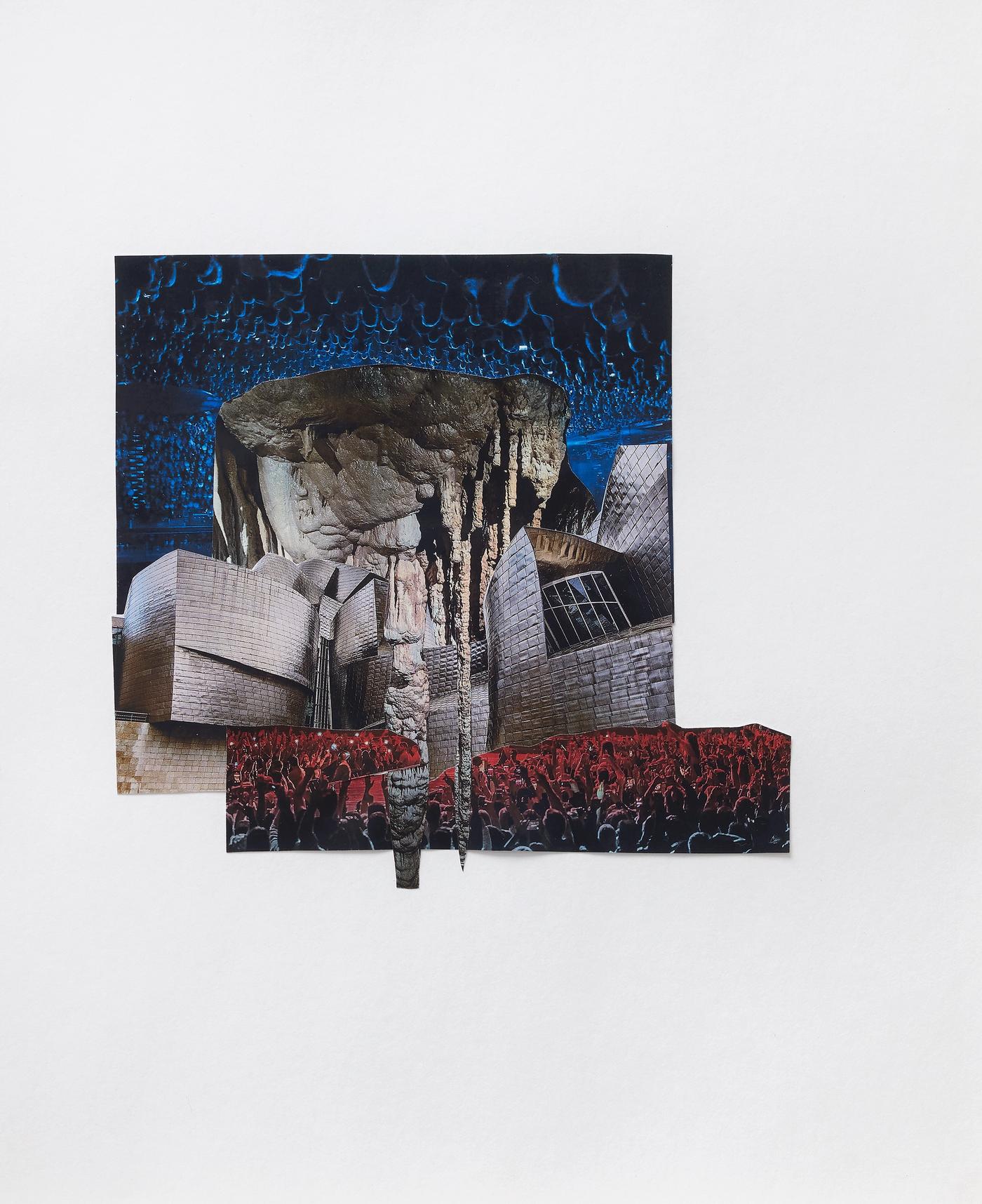
“Thank God you’re here” is an exclamation of relief at the presence of another person.This presence offers a sense of safety or comfort—delivery from whatever was occurring before they arrived. The phrase is also a simple instruction: thank God—a body that is both present and absent, a body whose presence is contingent on social agreements that are substantiated through ritual and repetition—that you are here.
The differences in meaning are less important than the situation that is implied: an experience of the presence of others. Each of the works presented in this exhibition is a meditation on the indeterminate boundary between presence and absence, and, in particular, how presence is read in the absence of bodies.
In RECEIVERS II, an inverted black-and-white photograph depicting a nest of audio cables suspended in space. There is no indication of an input or output for whatever signals might be transferring through this system of communication, leaving the viewer to wonder what lies beyond the frame; where (and who) the speaker and listener might be.
The vernacular architecture of public venues—metal banisters that guide bodies up stairways and ramps, through admission lines, away from stages—is taken up by the RUINERS series. Along with concrete, these suggestive architectural forms are a pervasive, ambient presence in public spaces. In RUINER VI, these forms act as the substrate for a sculptural network of terry cloth, ski masks, audio cables, and concrete. Terry-cloth towels are often used improvisationally to silence and dampen unwanted noise or vibrations, in the same way that masks are used to obscure—or mute—the face, in order to obscure and protect one’s identity. Masks allow the wearer to be visible without being fully legible. The ephemeral gesture of silencing is made more permanent through the material’s absorption of concrete, which creates a sculptural recording of the material’s capacity for assimilation.
In LOCKED LUNGS, a translucent, four-inch acrylic record, inscribed with a locked groove, indefinitely repeats the sound of someone inhaling and exhaling. Breathing —the extraction of air from the atmosphere that facilitates life—is an essential exchange between interior and exterior, body and environment. The sound is emitted from two tiny speakers, like a pair of lungs pushing air into the gallery, and the insinuated body endlessly caves in and expands.
Like lungs, caves are hollow spaces within solid forms. They delineate—and facilitate exchanges—between inside and outside, whether by providing people with shelters or forums for sharing information. Caves are the ancestral homes of homo sapiens. In caves, we began to tell stories to one another with sounds and images—around fires, surrounded by walls inscribed with records of our experiences. (In a cave in Indonesia, archaeologists recently discovered a life-size painting of a wild pig that was made 45,500 years ago, making it the oldest known cave drawing.) Just as caves were spaces in which domestic, social, and theatrical life coalesced, COLLAPSE I–IV, a series of collages, compresses images of caves onto those of coliseums, arenas, and other types of performance venues. The formal gesture of collapsing these images into a single plane allows the prehistoric to haunt the present. The erasure of the distinctions between the contemporary categories of domestic, social, and theatrical throws into relief the discursive relationship between them.
Nikita Gale is a Los Angeles–based artist. Nikita holds a BFA from Yale and an MFA from New Genres at UCLA. The artist's work has been presented widely, including recent solo exhibitions at California African American Museum, Los Angeles; MoMA PS1, New York; Reyes | Finn, Detroit; University of Texas - Austin Visual Arts Center, Austin; Commonwealth & Council, Los Angeles with recent group exhibitions at The Studio Museum in Harlem, New York; the Hammer Museum, Los Angeles; Cubitt, London; and Nottingham Contemporary, Nottingham. This is Nikita's second solo exhibition with 56 HENRY.